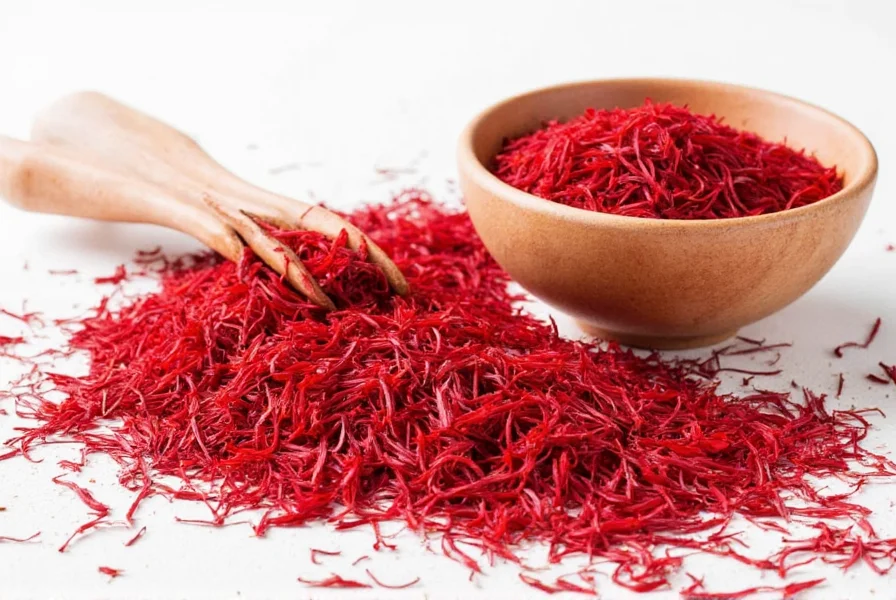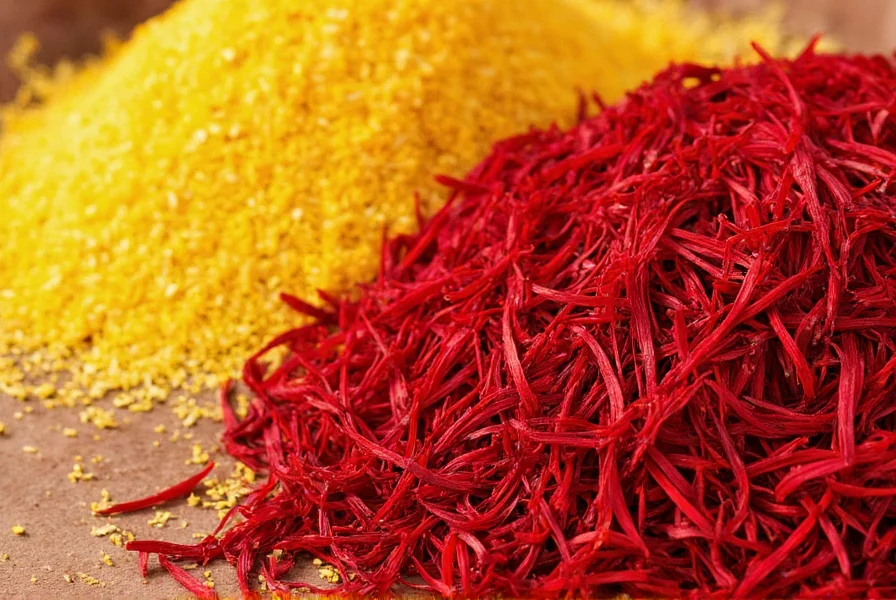When searching for saffron substitution options, home cooks typically need practical, affordable alternatives to this world's most expensive spice. Understanding the right replacement depends on whether you prioritize color, flavor, or both in your specific recipe. This guide provides evidence-based alternatives that deliver the best possible results when saffron isn't available or practical for your cooking needs.
Why Saffron Substitutes Matter
Saffron costs between $500-$5,000 per pound due to its labor-intensive harvesting process. Each crocus flower produces just three stigmas, requiring approximately 75,000 flowers to yield one pound of saffron. This explains why many home chefs seek affordable alternatives to saffron for everyday cooking while reserving authentic saffron for special occasions.
Top Saffron Substitutes Compared
| Substitute | Color Match | Flavor Match | Ratio (vs Saffron) | Best For |
|---|---|---|---|---|
| Turmeric | ★★★★☆ | ★☆☆☆☆ | 1/8 tsp per pinch | Rice dishes, soups, mustards |
| Paprika (sweet) | ★★★☆☆ | ★★★☆☆ | 1/2 tsp per pinch | Paella, stews, marinades |
| Safflower | ★★★☆☆ | ★★☆☆☆ | 1/4 tsp per pinch | Baked goods, rice dishes |
| Annatto | ★★★☆☆ | ★★☆☆☆ | 1/4 tsp per pinch | Latin American dishes, cheeses |
| Saffron extract | ★★★★★ | ★★★★★ | 1/2 tsp per pinch | When budget allows for partial substitution |
Detailed Saffron Substitute Analysis
Turmeric: The Color Champion
When you need saffron substitute that gives similar color, turmeric delivers vibrant yellow with minimal cost. This curry spice contains curcumin, which provides intense coloring power. While turmeric lacks saffron's floral notes, it works well in dishes where color matters more than precise flavor, such as basic rice preparations or mustards. For how to replace saffron in recipes requiring yellow coloring, use 1/8 teaspoon turmeric per pinch of saffron. Avoid using in delicate dishes like bouillabaisse where turmeric's earthy flavor would dominate.

Paprika: Flavor-Focused Alternative
For best saffron substitute for paella and other Mediterranean dishes, sweet paprika offers the closest flavor approximation. Spanish smoked paprika (pimentón) particularly works well in rice dishes where saffron traditionally appears. Use 1/2 teaspoon paprika per pinch of saffron, adding it early in cooking to develop flavor. Note that paprika provides less intense coloring than saffron, so you may need to increase the amount slightly for visual impact while monitoring flavor balance.
Safflower: The Balanced Option
Safflower petals (sometimes sold as "Mexican saffron") provide the most balanced alternative with moderate coloring ability and neutral flavor. This makes it ideal for saffron replacement in baking where strong competing flavors would ruin delicate pastries. Use 1/4 teaspoon safflower per pinch of saffron, steeping in warm liquid for 10 minutes before adding to your recipe. Safflower works particularly well in dishes like saffron bread or cornbread where you want golden color without overwhelming flavor.
Choosing the Right Substitute for Your Recipe
Selecting the appropriate saffron substitution requires analyzing your specific cooking needs:
- For color emphasis: Choose turmeric or annatto when visual appearance matters most (e.g., plain rice dishes)
- For flavor emphasis: Opt for paprika in savory dishes where saffron's floral notes are less critical
- For delicate dishes: Use safflower in baking or subtle sauces where strong competing flavors would dominate
- For authentic Spanish cuisine: Combine paprika with a small amount of turmeric to approximate both color and flavor
Common Substitution Mistakes to Avoid
Many home cooks make these errors when attempting what can I use instead of saffron threads:
- Using too much substitute (start with half the recommended amount and adjust)
- Adding substitutes at the wrong cooking stage (most work best when added early)
- Expecting identical results (no substitute perfectly replicates saffron's complex profile)
- Ignoring recipe-specific needs (paella requires different considerations than baked goods)
When to Avoid Substitution Altogether
Certain dishes demand authentic saffron for proper flavor development. Reserve genuine saffron for:
- Traditional Spanish paella (where saffron defines the dish)
- Persian jeweled rice (where floral notes are essential)
- Special occasion dishes where authenticity matters
For everyday cooking, however, these cheaper alternatives to saffron spice deliver satisfactory results while keeping your grocery budget intact. Consider purchasing small quantities of genuine saffron for special occasions while relying on appropriate substitutes for regular cooking needs.
Frequently Asked Questions
Can I use saffron extract as a substitute for threads?
Yes, saffron extract works as an effective substitute at a ratio of 1/2 teaspoon per pinch of threads. The extract provides consistent coloring and flavor without the need for steeping, making it particularly useful in liquid-based recipes like sauces and soups where even distribution matters.
What's the best saffron substitute for vegan cooking?
Turmeric serves as the most reliable saffron substitute for vegan cooking, providing vibrant color without animal products. For better flavor approximation in vegan paella, combine 1/4 teaspoon turmeric with 1/4 teaspoon smoked paprika per pinch of saffron to create a more complex profile that mimics traditional saffron-infused dishes.
How do I adjust recipes when substituting saffron?
When making saffron substitutions, always start with half the recommended amount, then taste and adjust. Add substitutes early in cooking for maximum flavor development, except with turmeric which can become bitter if cooked too long. For liquid recipes, steep substitutes in 2 tablespoons of warm broth or water for 10 minutes before adding to ensure even distribution of color and flavor.
Does paprika work as a saffron substitute in risotto?
Sweet paprika works moderately well as a saffron substitute in risotto at a ratio of 1/2 teaspoon per pinch of saffron. For better results, combine 1/4 teaspoon sweet paprika with a pinch of turmeric to achieve both color and flavor approximation. Add the mixture when toasting the rice at the beginning of cooking to maximize flavor absorption, but avoid smoked paprika which would overpower the delicate risotto profile.
Can I combine multiple saffron substitutes for better results?
Yes, combining substitutes often yields superior results. For Mediterranean dishes, blend 1/8 teaspoon turmeric with 1/4 teaspoon sweet paprika per pinch of saffron. This combination delivers both the vibrant color of turmeric and the earthy flavor notes of paprika, creating a more comprehensive approximation of saffron's complex profile while remaining cost-effective for regular cooking.











 浙公网安备
33010002000092号
浙公网安备
33010002000092号 浙B2-20120091-4
浙B2-20120091-4